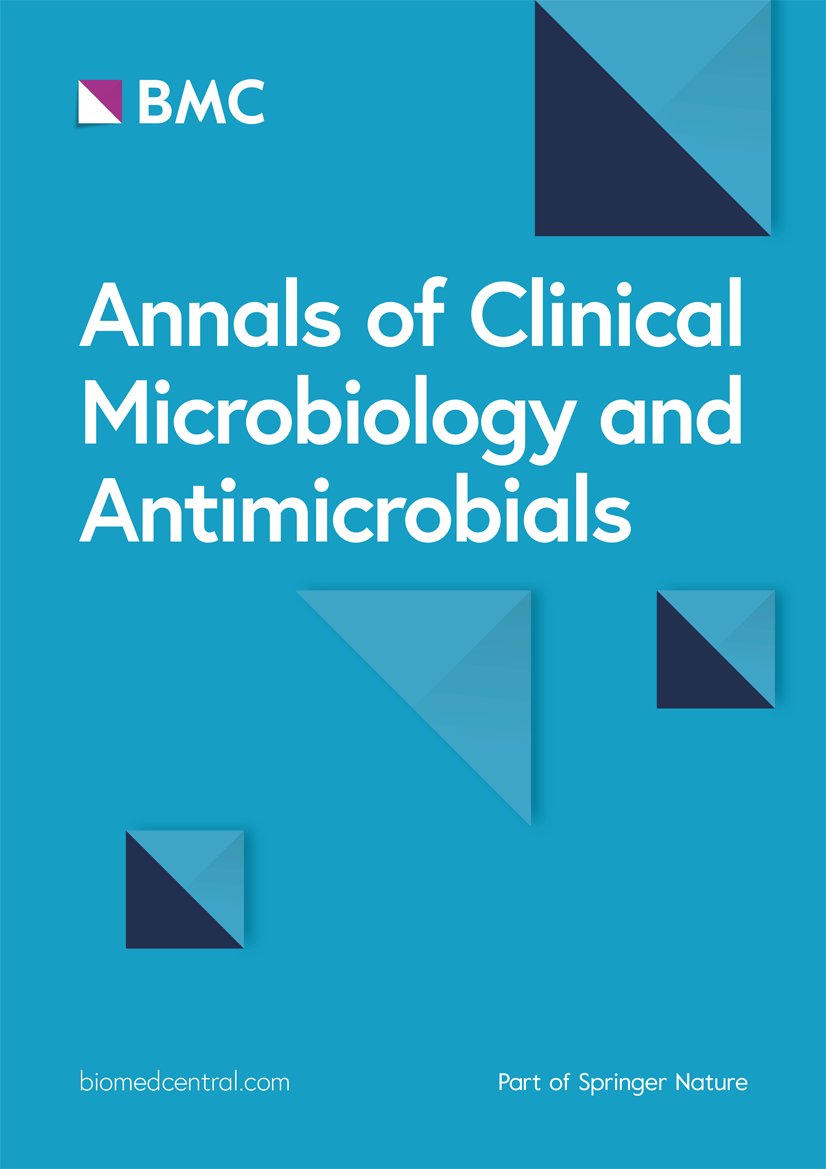Development of a novel sequence based real-time PCR assay for specific and sensitive detection of Burkholderia pseudomallei in clinical and environmental matrices
IF 3.6
2区 医学
Q1 MICROBIOLOGY
Annals of Clinical Microbiology and Antimicrobials
Pub Date : 2024-04-10
DOI:10.1186/s12941-024-00693-4
引用次数: 0
Abstract
Melioidosis, caused by the category B biothreat agent Burkholderia pseudomallei, is a disease with a high mortality rate and requires an immediate culture-independent diagnosis for effective disease management. In this study, we developed a highly sensitive qPCR assay for specific detection of Burkholderia pseudomallei and melioidosis disease diagnosis based on a novel target sequence. An extensive in-silico analysis was done to identify a novel and highly conserved sequence for developing a qPCR assay. The specificity of the developed assay was analyzed with 65 different bacterial cultures, and the analytical sensitivity of the assay was determined with the purified genomic DNA of B. pseudomallei. The applicability of the assay for B. pseudomallei detection in clinical and environmental matrices was evaluated by spiking B. pseudomallei cells in the blood, urine, soil, and water along with suitable internal controls. A novel 85-nucleotide-long sequence was identified using in-silico tools and employed for the development of the highly sensitive and specific quantitative real-time PCR assay S664. The assay S664 was found to be highly specific when evaluated with 65 different bacterial cultures related and non-related to B. pseudomallei. The assay was found to be highly sensitive, with a detection limit of 3 B. pseudomallei genome equivalent copies per qPCR reaction. The detection limit in clinical matrices was found to be 5 × 102 CFU/mL for both human blood and urine. In environmental matrices, the detection limit was found to be 5 × 101 CFU/mL of river water and 2 × 103 CFU/gm of paddy field soil. The findings of the present study suggest that the developed assay S664 along with suitable internal controls has a huge diagnostic potential and can be successfully employed for specific, sensitive, and rapid molecular detection of B. pseudomallei in various clinical and environmental matrices.开发基于序列的新型实时 PCR 分析法,用于特异、灵敏地检测临床和环境基质中的假丝酵母伯克霍尔德菌
由 B 类生物威胁病原体伯克霍尔德氏假丝酵母菌(Burkholderia pseudomallei)引起的美拉德氏病是一种死亡率很高的疾病,需要立即做出与培养无关的诊断才能有效控制疾病。在这项研究中,我们开发了一种高灵敏度的 qPCR 检测方法,用于特异性检测假丝酵母伯克霍尔德氏菌,并根据新的目标序列诊断瓜虫病。我们进行了广泛的体内分析,以确定用于开发 qPCR 检测方法的新颖且高度保守的序列。利用 65 种不同的细菌培养物分析了所开发检测方法的特异性,并利用纯化的假丝酵母菌基因组 DNA 确定了该检测方法的分析灵敏度。通过在血液、尿液、土壤和水中添加假丝酵母菌细胞以及合适的内部对照,评估了该测定在临床和环境基质中检测假丝酵母菌的适用性。利用内嵌工具确定了一个长达 85 个核苷酸的新序列,并将其用于开发高灵敏度和特异性的定量实时 PCR 检测方法 S664。在对 65 种与假丝酵母菌有关和无关的不同细菌培养物进行评估时,发现 S664 检测方法具有高度特异性。该检测方法灵敏度很高,每次 qPCR 反应的检测限为 3 个假丝酵母菌基因组等效拷贝。在临床基质中,人血和尿液的检测限均为 5 × 102 CFU/mL。在环境基质中,河水的检测限为 5 × 101 CFU/mL,水田土壤的检测限为 2 × 103 CFU/gm。本研究的结果表明,所开发的检测方法 S664 以及合适的内部对照具有巨大的诊断潜力,可成功用于各种临床和环境基质中伪马利杆菌的特异、灵敏和快速分子检测。
本文章由计算机程序翻译,如有差异,请以英文原文为准。
求助全文
约1分钟内获得全文
求助全文
来源期刊

Annals of Clinical Microbiology and Antimicrobials
MICROBIOLOGY-
CiteScore
8.60
自引率
0.00%
发文量
49
审稿时长
>12 weeks
期刊介绍:
Annals of Clinical Microbiology and Antimicrobials considers good quality, novel and international research of more than regional relevance. Research must include epidemiological and/or clinical information about isolates, and the journal covers the clinical microbiology of bacteria, viruses and fungi, as well as antimicrobial treatment of infectious diseases.
Annals of Clinical Microbiology and Antimicrobials is an open access, peer-reviewed journal focusing on information concerning clinical microbiology, infectious diseases and antimicrobials. The management of infectious disease is dependent on correct diagnosis and appropriate antimicrobial treatment, and with this in mind, the journal aims to improve the communication between laboratory and clinical science in the field of clinical microbiology and antimicrobial treatment. Furthermore, the journal has no restrictions on space or access; this ensures that the journal can reach the widest possible audience.
 求助内容:
求助内容: 应助结果提醒方式:
应助结果提醒方式:


